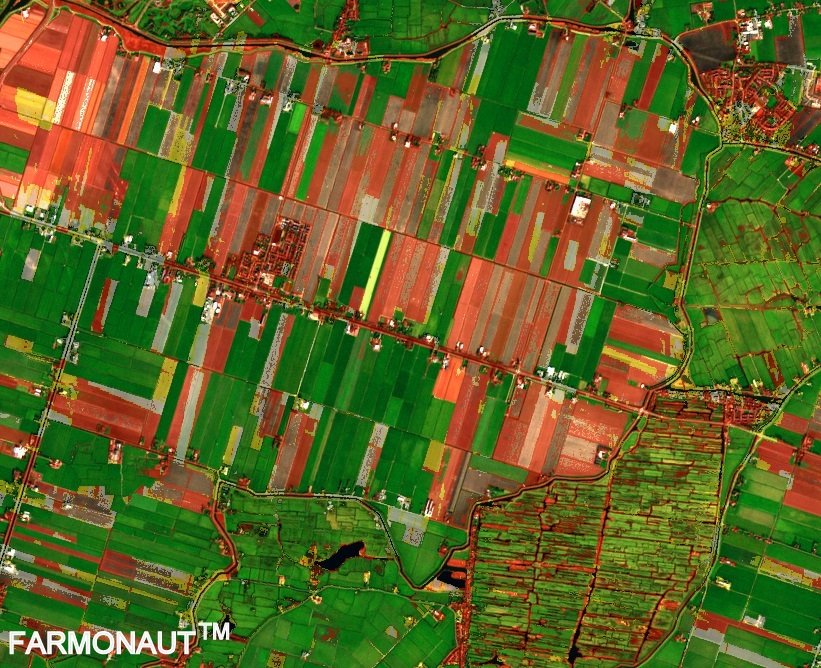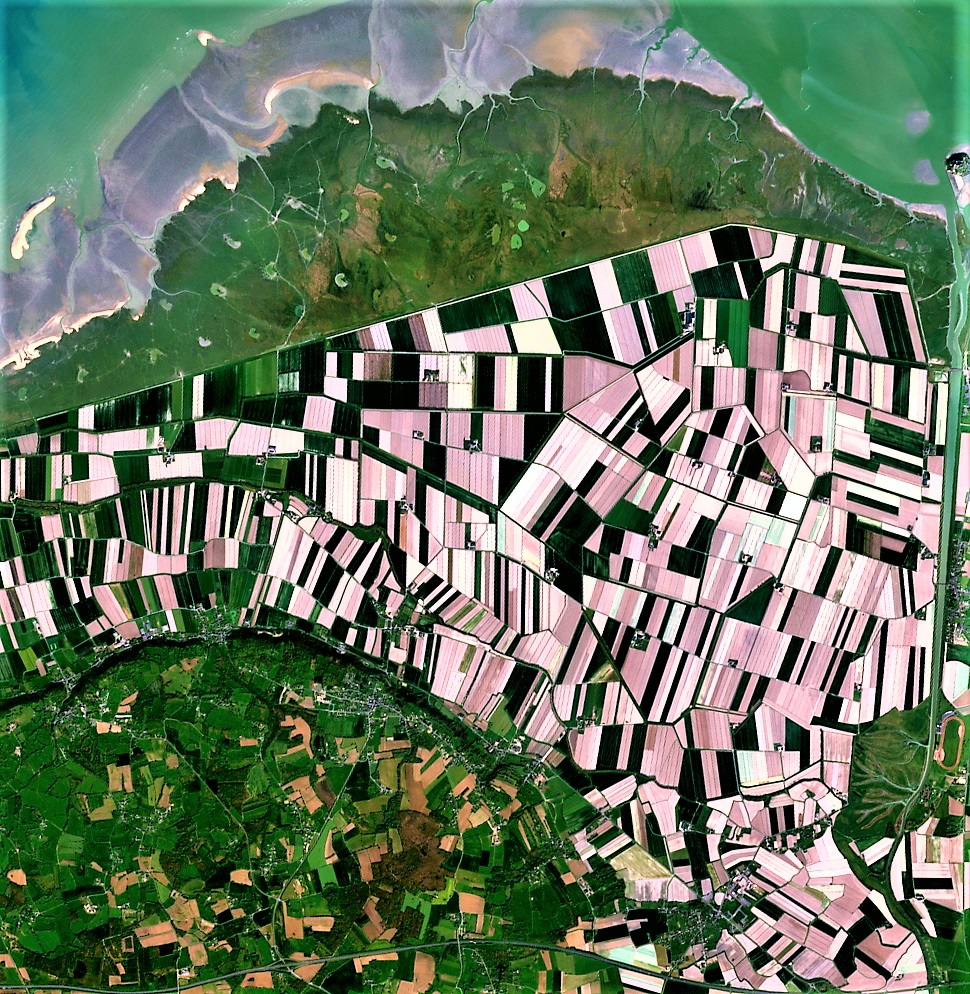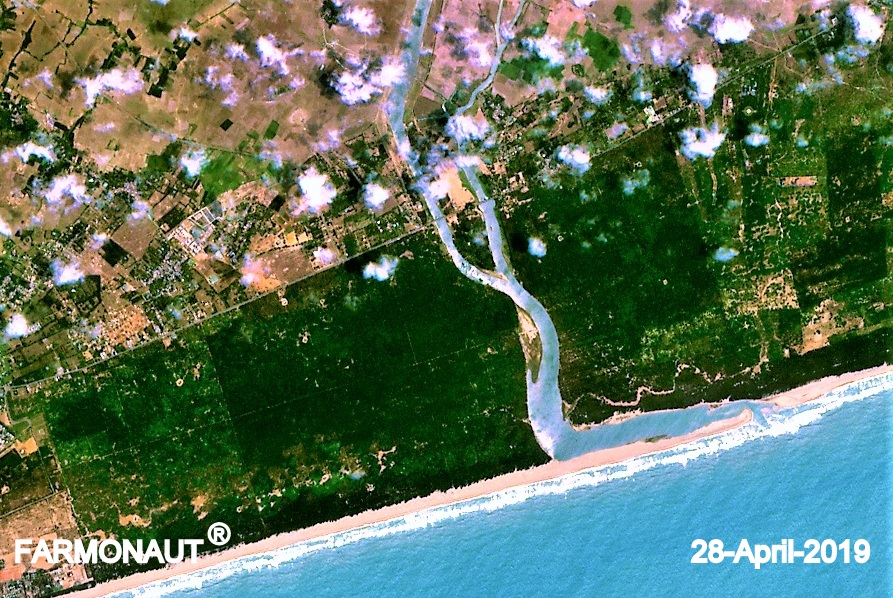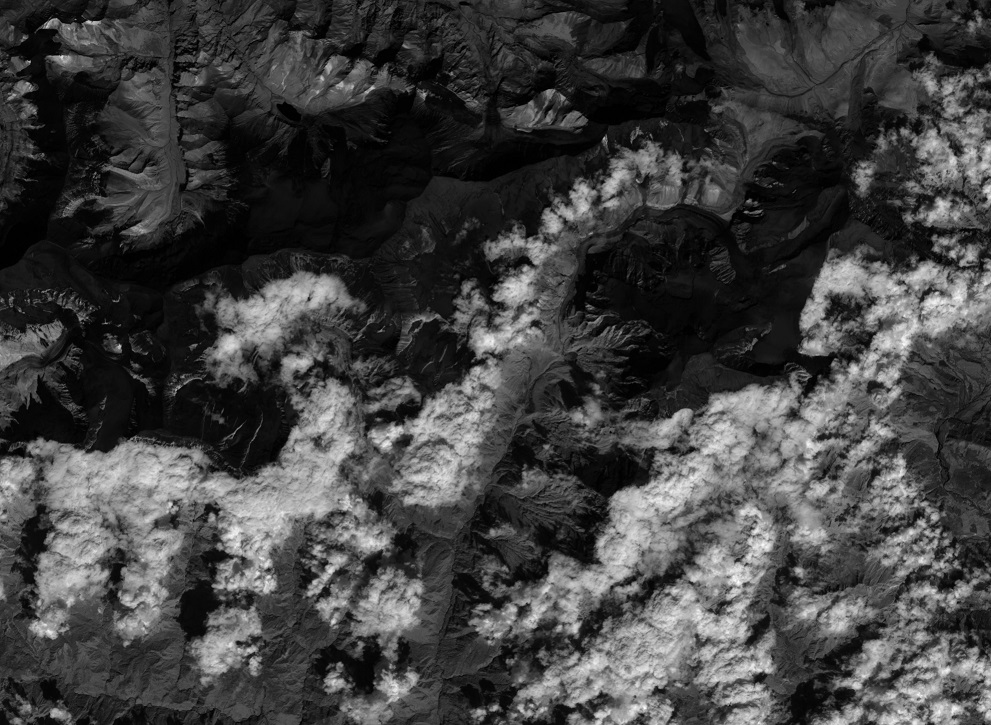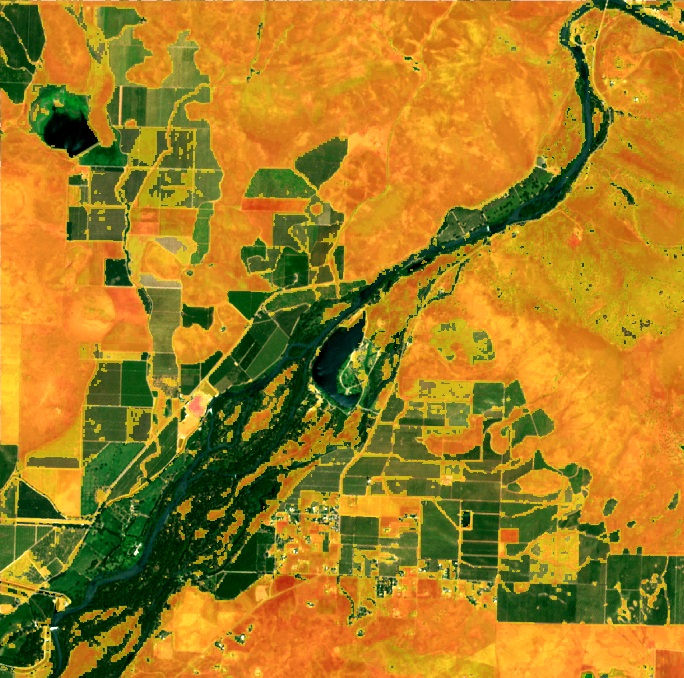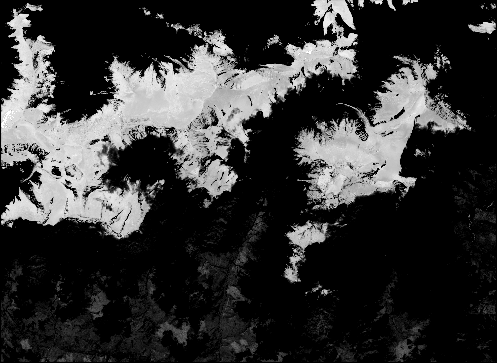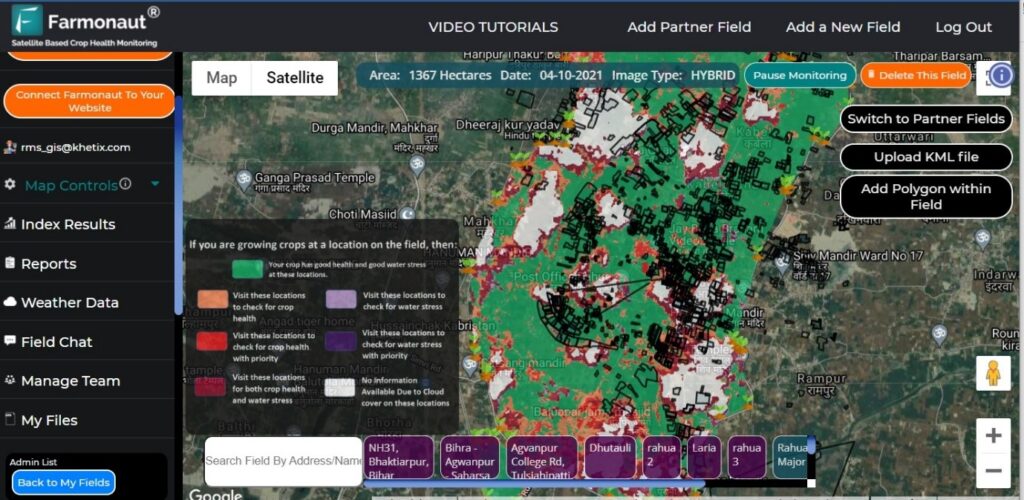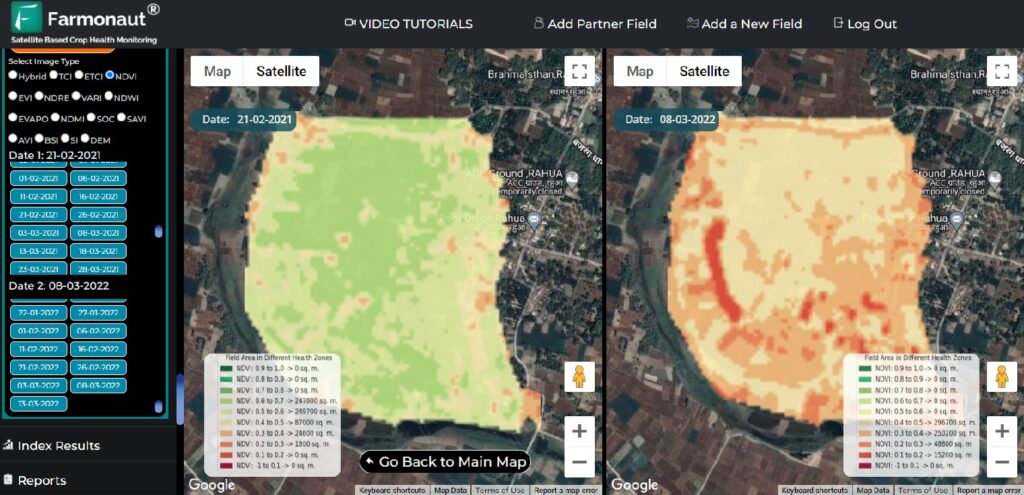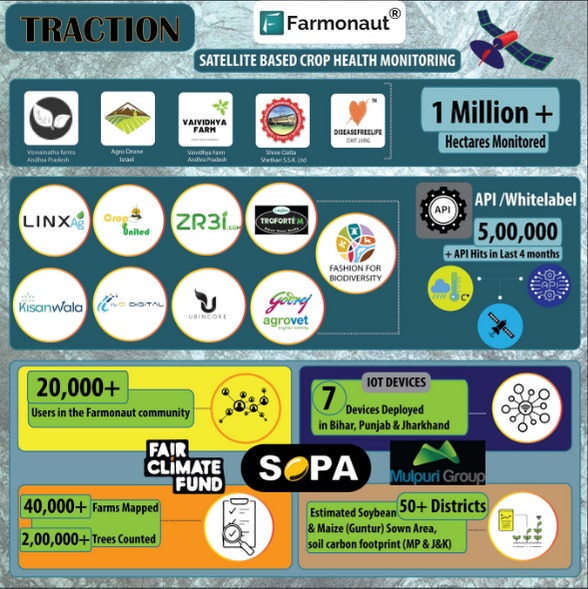Revolutionary Space-Based Radar: Metasurface Antennas Tracking Moving Targets from Orbit
“Space-based radar with metasurface antennas can continuously track moving targets from orbit, revolutionizing satellite capabilities.”
In the rapidly evolving world of space technology, we are witnessing a groundbreaking advancement that promises to reshape the landscape of defense and satellite capabilities. At the forefront of this revolution is the innovative use of metasurface antennas for space-based radar, a technology that addresses one of the most elusive challenges in military satellite technology: the continuous tracking of moving targets from orbit.
This blog post delves into the cutting-edge developments in space-based radar technology, exploring how electronically-steered antennas and metasurface technology are transforming our ability to monitor and track objects on Earth from space. We’ll examine the technical aspects, potential applications, and the significant market opportunities this technology presents for both defense and geospatial science sectors.
The Dawn of a New Era in Space-Based Radar
The recent emergence of Seattle-based startup Kapta Space marks a significant milestone in the field of space-based radar technology. After operating in stealth mode for nearly three years, Kapta Space has announced its plans to demonstrate metasurface antenna technology for space-based radar, aiming to solve one of the defense sector’s most persistent challenges.
Founded by industry veterans Milton Perque, formerly of Echodyne, and Adam Bily, an alumnus of Apple and Astranis, Kapta Space has secured $5 million in seed funding to support its groundbreaking space-based electronically-steered radar technology. This investment round, led by MetaVC Partners and supported by Entrada Ventures and Blue Collective, underscores the high potential and confidence in this innovative approach.
Understanding Metasurface Technology
At the heart of Kapta Space’s innovation is the adaptation of metasurface technology for space-based imaging and tracking applications. But what exactly is metasurface technology, and how does it revolutionize space-based radar?
- Definition: Metasurface technology involves controlling and shaping electromagnetic waves using specially designed ultra-thin materials.
- Advantages: This approach allows for the creation of antennas that are smaller, lighter, and more energy-efficient than traditional designs.
- Applications: While currently used in electronically-steered antennas for wireless communications, Kapta is pioneering its use in space-based radar systems.
The potential of this technology extends beyond just size and weight reduction. Metasurface antennas offer a more cost-effective and energy-efficient alternative to traditional Active Electronically Steered Arrays (AESAs), opening up new possibilities for satellite-based surveillance and imaging.
![]()
Applications in Defense and Beyond
The primary focus of Kapta Space’s technology is the military market, where the demand for advanced space-based radar capabilities is high. Some key applications include:
- Ground Moving Target Indication (GMTI): The ability to track slow-moving ground targets from space, a capability that has long eluded military satellites.
- Synthetic Aperture Radar (SAR): High-resolution geospatial imaging for both military and civilian applications.
- Maritime Domain Awareness: Enhanced surveillance of maritime activities from space.
- Space Domain Awareness: Improved tracking and monitoring of objects in orbit.
- Ballistic Missile Defense: Potential applications in early warning and tracking systems.
The versatility of metasurface antenna technology opens up a wide range of possibilities beyond just military applications. In the realm of geospatial science, this technology could revolutionize how we monitor environmental changes, manage natural resources, and respond to disasters.
The Technical Edge: How Metasurface Antennas Work
To understand the revolutionary nature of metasurface antennas, it’s essential to delve into the technical aspects that set them apart from traditional radar systems:
- Electromagnetic Wave Control: Metasurfaces are engineered to manipulate electromagnetic waves at a subwavelength scale, allowing for precise control over beam direction and shape.
- Compact Design: By leveraging the properties of metamaterials, these antennas can achieve capabilities similar to larger traditional antennas in a much smaller form factor.
- Energy Efficiency: The design principles of metasurface antennas allow for more efficient use of power, a critical factor in space-based applications.
- Adaptive Beamforming: These antennas can rapidly adjust their beam patterns electronically, enabling agile tracking of moving targets.
This technological edge translates into significant advantages for space-based radar systems, including improved performance, reduced launch costs due to lighter payloads, and enhanced flexibility in satellite design and operation.
Overcoming Historical Challenges
The development of effective space-based radar for tracking moving targets has been a long-standing challenge in the defense sector. Previous attempts, including DARPA’s efforts decades ago, faced significant hurdles:
- High costs associated with large, high-power antennas
- Technical difficulties in real-time data transmission
- Limitations in continuous tracking capabilities
Kapta Space’s approach with metasurface technology aims to address these historical challenges head-on, offering a more feasible and cost-effective solution for continuous tracking of moving targets from orbit.
The Road to Space Deployment
Kapta Space is not just theorizing about the potential of their technology; they are actively working towards space deployment. Their roadmap includes:
- DARPA SBIR Project: A foundational step towards building a one-meter-square antenna for aerial and space-based demonstrations.
- In-Orbit Demonstration: Plans for a multi-satellite demonstration to validate the ability to maintain custody of moving targets and transfer tracking between satellites.
- Collaboration with Defense Agencies: Engaging with combatant commands to understand priorities and capability gaps that their technology could address.
This ambitious plan showcases Kapta Space’s commitment to bringing their revolutionary technology from concept to practical application in the near future.
“Advanced space-based radar systems have significant market potential in defense and geospatial science, driving ongoing research and investment.”
Market Potential and Investment Landscape
The market potential for advanced space-based radar systems, particularly those leveraging metasurface antenna technology, is substantial. Key factors driving this potential include:
- Growing Defense Budgets: Increased global defense spending, especially in space-based technologies.
- Demand for Enhanced Surveillance: Both military and civilian sectors require improved space-based monitoring capabilities.
- Advancements in Satellite Technology: The overall trend towards smaller, more capable satellites aligns well with metasurface antenna technology.
- Geospatial Data Market Growth: Expanding applications for high-resolution Earth observation data in various industries.
The $5 million seed funding secured by Kapta Space is just the beginning. As the technology proves its worth, we can expect to see increased investment from both private and military sectors, fueling further research and development in this exciting field.
![]()
Comparative Analysis: Traditional vs. Metasurface Radar Technologies
To better understand the advantages of metasurface antenna technology for space-based radar, let’s compare it with traditional approaches:
| Technology Type | Target Tracking Capability | Antenna Size/Weight | Energy Efficiency | Key Applications |
|---|---|---|---|---|
| Traditional SAR | Limited | Large/Heavy | Low | Static Imaging, Limited GMTI |
| Metasurface Antennas | Continuous | Compact/Lightweight | High | GMTI, Maritime Surveillance, Space Domain Awareness |
| Phased Array Radar | Moderate | Medium/Moderate | Moderate | Air Defense, Weather Monitoring |
| Active Electronically Scanned Array (AESA) | Good | Large/Heavy | Moderate | Military Aircraft, Advanced Radar Systems |
This comparison highlights the significant advantages of metasurface antenna technology, particularly in terms of size, weight, and energy efficiency – crucial factors for space-based applications.
Challenges and Future Developments
While the potential of metasurface antenna technology for space-based radar is immense, several challenges remain:
- Technical Hurdles: Adapting the technology for the harsh space environment and ensuring long-term reliability.
- Regulatory Concerns: Navigating the complex regulatory landscape surrounding space-based surveillance technologies.
- Data Processing and Transmission: Managing the vast amounts of data generated by these advanced radar systems.
- Integration with Existing Systems: Ensuring compatibility and interoperability with current defense and satellite infrastructure.
Future developments in this field are likely to focus on addressing these challenges while further enhancing the capabilities of metasurface antennas. We can expect to see advancements in:
- Materials science to improve antenna performance and durability
- AI and machine learning integration for more sophisticated target tracking and data analysis
- Miniaturization of associated electronics to further reduce satellite size and weight
- Enhanced data compression and transmission technologies for real-time information relay
Implications for Global Security and Surveillance
The development of advanced space-based radar systems using metasurface antennas has far-reaching implications for global security and surveillance:
- Enhanced Military Intelligence: Improved ability to track and monitor potential threats in real-time.
- Maritime Security: Better monitoring of shipping lanes, detection of illegal activities, and support for search and rescue operations.
- Border Surveillance: Enhanced capabilities for monitoring border regions and detecting unauthorized crossings.
- Disaster Response: Rapid assessment of affected areas during natural disasters for more effective response coordination.
- Environmental Monitoring: Improved tracking of environmental changes, including deforestation, ice melt, and pollution spread.
These advancements could significantly alter the balance of power in global surveillance capabilities, potentially leading to new geopolitical dynamics and strategic considerations.
The Role of Private Sector Innovation
The story of Kapta Space highlights the crucial role that private sector innovation plays in advancing defense and space technologies. Key aspects include:
- Agility and Speed: Startups like Kapta can often move faster and more flexibly than larger, established entities.
- Cross-Industry Expertise: Founders bringing experience from diverse fields (like wireless communications) to solve defense challenges.
- Attracting Investment: The ability to secure private funding accelerates technology development and demonstration.
- Collaboration with Defense Agencies: Public-private partnerships that combine innovative ideas with military requirements.
This trend of private sector involvement in space and defense technologies is likely to continue, driving rapid advancements and potentially reshaping traditional industry dynamics.
Ethical Considerations and International Implications
As with any advanced surveillance technology, the development of metasurface antenna-based space radar systems raises important ethical and international considerations:
- Privacy Concerns: The enhanced tracking capabilities could potentially infringe on individual and national privacy rights.
- Arms Race in Space: Advancements in space-based surveillance might accelerate militarization of space.
- International Regulations: The need for updated international laws and agreements governing the use of such technologies.
- Dual-Use Technology: Balancing the beneficial civilian applications with potential military uses.
- Global Power Dynamics: How these technologies might shift the balance of power in international relations.
Addressing these ethical and international concerns will be crucial as the technology advances, requiring ongoing dialogue between technologists, policymakers, and international bodies.
Conclusion: A New Frontier in Space-Based Radar
The development of metasurface antenna technology for space-based radar represents a significant leap forward in our ability to monitor and track objects from orbit. This innovation promises to revolutionize military satellite technology, offering continuous tracking of moving targets and enhancing our capabilities in areas like maritime surveillance and space domain awareness.
As companies like Kapta Space push the boundaries of what’s possible, we stand on the brink of a new era in space-based radar systems. The implications of this technology extend far beyond defense applications, potentially transforming fields such as environmental monitoring, disaster response, and geospatial science.
While challenges remain, including technical hurdles and ethical considerations, the potential benefits of this technology are immense. As research and investment in this field continue to grow, we can expect to see rapid advancements and new applications emerging in the coming years.
The future of space-based radar is here, and it’s shaping up to be more capable, efficient, and transformative than ever before. As we continue to explore and develop these technologies, we open up new possibilities for understanding and monitoring our world from above, ushering in a new age of space-based observation and surveillance.
FAQs
- What is metasurface antenna technology?
Metasurface antenna technology involves using specially designed ultra-thin materials to control and shape electromagnetic waves, allowing for smaller, lighter, and more efficient antennas for radar and communication applications. - How does space-based radar with metasurface antennas differ from traditional radar systems?
Space-based radar with metasurface antennas offers continuous tracking of moving targets, is more compact and lightweight, and provides higher energy efficiency compared to traditional radar systems. - What are the main applications of this technology in defense?
Key applications include Ground Moving Target Indication (GMTI), maritime surveillance, space domain awareness, and potential use in ballistic missile defense systems. - How might this technology impact global security?
It could enhance military intelligence capabilities, improve maritime and border security, and provide better tools for disaster response and environmental monitoring. - What challenges does the development of this technology face?
Challenges include adapting the technology for the space environment, addressing regulatory concerns, managing data processing and transmission, and integrating with existing systems.
Earn With Farmonaut: Affiliate Program
Earn 20% recurring commission with Farmonaut’s affiliate program by sharing your promo code and helping farmers save 10%. Onboard 10 Elite farmers monthly to earn a minimum of $148,000 annually—start now and grow your income!
Access Farmonaut’s Services:
For developers: API | API Developer Docs





